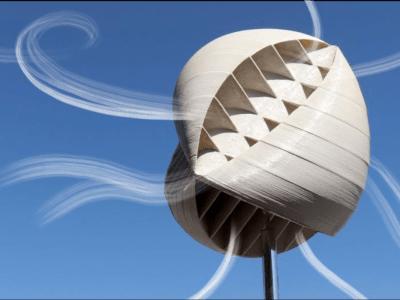The small wind turbine market is emerging as a transformative force in the global renewable energy landscape, offering decentralized, scalable, and efficient wind power solutions. As governments and consumers seek cleaner and more autonomous energy sources, small wind turbines are advancing rapidly through technological innovations, cost reductions, and strategic applications in residential, commercial, and remote settings. This newsletter explores how small wind turbines are set to revolutionize wind energy by 2025 and beyond.
Key Highlights of the Small Wind Turbine Revolution
The global small wind turbine market was valued at approximately $3.6 billion in 2024 and is anticipated to grow at a compound annual growth rate (CAGR) of over 10% to 2034, driven by increasing demand for localized, clean energy solutions.
Technological advancements have significantly improved turbine efficiency, durability, and noise reduction, making small wind turbines viable even in urban and low-wind environments.
Integration with energy storage systems and smart grid technology enhances reliability and optimizes energy output by managing intermittency challenges.
The drop in production costs through miniaturization of components and improved manufacturing techniques is bringing down capital expenses and shortening payback periods, attracting wider adoption.
Small wind turbines are gaining traction in developing regions, supporting rural electrification and decentralized power grids in areas with limited or no grid access.
New digital technologies enable remote monitoring, predictive maintenance, and data-driven performance optimization, reducing operational costs and improving lifespan.
Technological Innovations Driving the Change
Designs now include both horizontal-axis and vertical-axis wind turbines optimized for diverse installation scenarios, such as rooftops, backyards, and small commercial sites.
Advanced blade aerodynamics and lightweight materials improve power capture from low and variable wind speeds, expanding site feasibility.
Noise control technologies, like serrated trailing edges and vibration dampers, address one of the longstanding barriers to urban deployment.
Smart turbine systems feature IoT connectivity, real-time data analytics, and automated controls that adjust blade pitch and rotation to maximize efficiency.
Novel concepts, such as bladeless vortex turbines and vertical axis machines, are being researched and trialed to offer new pathways for small-scale wind power generation with minimal mechanical complexity.
Market Trends and Applications
Residential sector adoption is growing as consumers seek to reduce electricity bills and enhance energy independence amid rising utility costs and climate concerns.
Commercial and agricultural applications benefit from turbines powering irrigation, water pumping, and backup systems in off-grid or microgrid environments.
Urban wind energy adoption increases as turbine sizes shrink and noise reductions improve feasibility in dense areas, complementing solar installations for hybrid renewable setups.
Government incentives, subsidies, and streamlined permitting processes in regions like North America and Europe are accelerating market growth and innovation.
Integration of small wind turbines into smart grids and microgrids boosts resilience, reliability, and supports broader electrification efforts, particularly in developing countries.
Challenges and Opportunities
While wind resource intermittency and site suitability remain key challenges, integration with battery storage and energy management systems offers a promising workaround.
Capital costs and grid integration hurdles still limit widespread adoption, but falling component prices and policy support are improving the business case.
Scaling manufacturing and supply chains to meet rising demand will be critical to maintaining cost reductions and production timelines.
Continued R&D into noise mitigation, automated predictive maintenance, and new turbine forms expands potential applications and user acceptance.
Emerging markets, especially in Asia and Africa, present large untapped opportunities as electrification drives accelerate.
Looking Ahead: The Future of Small Wind Energy
By 2033, the small wind turbine market is projected to more than double in value, potentially exceeding $1.2 billion globally, powered by ongoing technological progress, policy momentum, and changing consumer behaviors. The miniaturization of wind power promises to decentralize energy generation, enhance grid stability, and democratize access to clean energy for millions worldwide.
Small wind turbines represent a paradigm shift, from massive centralized energy infrastructure to distributed, personalized, and adaptable renewable solutions. By complementing solar power and other decentralized technologies, they will play a crucial role in the transition to a sustainable, low-carbon energy future globally.
Sources driving this transformation include global turbine manufacturers, energy policy studies, market analytics firms, and ongoing technological research published up to 2025.
Sources: MarketReportAnalytics, Global Market Insights
